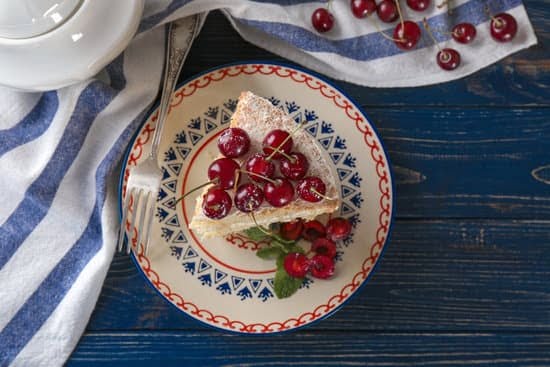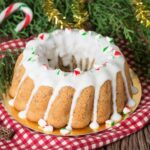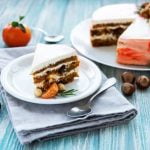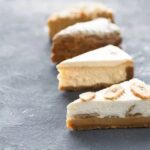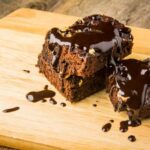Decorating a birch tree cake using buttercream frosting is an impressive and visually stunning way to elevate any occasion. Birch tree designs have gained popularity in the world of cake decorating due to their natural beauty and versatility. In this article, we will guide you through the step-by-step process of creating a birch tree cake using buttercream frosting, from preparing the cake to adding the finishing touches.
The allure of birch trees lies in their elegant white bark with its distinctive black markings. This design lends itself well to cakes, creating a striking and rustic look that can complement various themes and occasions. Whether you are planning a woodland-themed wedding, a winter birthday celebration, or simply want to showcase your cake decorating skills, learning how to decorate a birch tree cake using buttercream frosting will add charm and sophistication to any event.
In the following sections of this article, we will provide detailed instructions on preparing the cake and mastering buttercream frosting basics. We will then delve into the art of creating realistic birch tree textures and adding branches, leaves, and other details.
We will also provide troubleshooting tips and advice on achieving professional results. With our comprehensive guide, you’ll soon be able to create your own stunning birch tree cakes that will impress your guests and leave them astounded by your talent.
Stay tuned as we explore each step of decorating a birch tree cake using buttercream frosting. You’ll discover useful techniques, helpful tips, and stunning ideas that will inspire you to unleash your creativity in this unique form of cake decoration. So let’s gather our tools, roll up our sleeves, and embark on this artistic journey together.
Preparing the Cake
Before you can begin decorating your birch tree cake, it is important to choose the appropriate cake flavor and size. Consider the occasion and the preferences of those you are serving. Some popular flavors for a birch tree cake include vanilla, chocolate, or even a combination of both.
Once you have selected the flavor, bake and cool your cake according to the recipe instructions. It is essential that the cake is completely cooled before you begin decorating to prevent any melting or damage to the buttercream frosting.
Next, level your cake by using a serrated knife or a cake leveler. This step ensures that your cake will have an even surface for frosting and decorating. After leveling, prepare a smooth layer of buttercream frosting to act as a base for your design. Spread it evenly on top of the cake using an offset spatula or a butter knife.
It is crucial to achieve a smooth and flawless layer of frosting before moving on to the next steps in decorating your birch tree cake. If there are any crumbs on the surface of your frosted cake, try using a bench scraper or icing smoother to create a clean and polished finish.
To summarize:
- Choose an appropriate flavor and size for your birch tree cake.
- Bake and cool the cake completely.
- Level the cake with a serrated knife or leveler.
- Frost the cake smoothly with buttercream frosting using an offset spatula or butter knife.
- Ensure there are no crumbs on the surface by using a bench scraper or icing smoother.
By following these steps, you will have a perfectly prepared canvas for creating your beautiful birch tree design using buttercream frosting.
Buttercream Frosting Basics
When it comes to decorating a birch tree cake, buttercream frosting is an ideal choice. Not only does this type of frosting provide a smooth and creamy texture, but it also allows for easy manipulation and shaping. The high fat content in buttercream helps to hold the design’s shape and ensures that the frosting does not slide or melt off the cake.
To make a simple buttercream frosting recipe, you will need the following ingredients:
- 1 cup (2 sticks) unsalted butter, softened.
- 4 cups powdered sugar.
- 2 teaspoons vanilla extract.
- 2 tablespoons milk or heavy cream.
In a mixing bowl, beat the softened butter until it becomes light and fluffy. Gradually add in the powdered sugar one cup at a time until fully incorporated. Add in the vanilla extract and milk or heavy cream and continue to mix until the desired consistency is reached. If the frosting is too thick, add more liquid; if it is too thin, add more powdered sugar.
When decorating your birch tree cake with buttercream frosting, it is important to achieve the right consistency and texture for ease of use. For piping branches and creating realistic textures like birch tree bark, a stiffer consistency is ideal. This can be achieved by adding more powdered sugar to your buttercream mixture until it holds its shape well when piped.
| Buttercream Color | Ingredients/Techniques Used |
|---|---|
| White Birch Bark | Plain white buttercream icing + piping bag with round tip for birch tree pattern |
| Brown Textured Bark | Brown buttercream icing + piping bag with leaf tip for creating textured bark |
| Green Leaves/Foliage | Green buttercream icing + piping bag with leaf tip for creating leaves |
Creating the Birch Tree Design
When decorating a birch tree cake using buttercream frosting, there are several techniques you can use to achieve a realistic and visually stunning design. One of the key elements in creating this design is capturing the texture and colors of birch tree bark. To do this, you can use different shades of buttercream frosting to add depth and dimension to the design.
To start, it is important to choose the right piping tip for creating the bark effect. A small round tip or a grass tip can both be effective depending on the size of your cake and the level of detail you want to achieve.
Using a piping bag filled with white buttercream frosting, begin by piping vertical lines along the sides of the cake. These lines should vary in thickness to mimic the natural irregularities found in real birch tree bark.
Next, take a clean brush or spatula and gently smooth out any harsh lines or ridges created by piping. This will help soften the edges and give your birch tree design a more realistic appearance. Once you have achieved a smooth base layer, it’s time to add some depth and contrast to your design.
Using a darker shade of brown or gray buttercream frosting, pipe thin horizontal lines across the vertical lines on your cake. The spacing between these lines should be irregular to imitate the natural look of birch trees. You may also want to consider adding a few diagonal lines for added realism.
Finally, take another clean brush or spatula and gently blend these horizontal lines into the vertical ones by making short strokes in an upward motion. This will create a seamless transition between the two shades and enhance the overall texture of your birch tree design.
Creating realistic branches on your cake can further enhance its birch tree theme. Use stiff buttercream frosting in a piping bag fitted with a small round tip or leaf tip to pipe branches onto your cake. Start from one side of the cake and pipe outward, making thinner lines for smaller branches and thicker lines for larger branches. To give the branches a more lifelike appearance, vary their lengths and angles.
Incorporating leaves and foliage into your birch tree design can add a touch of color and vibrancy. Use green buttercream frosting in a piping bag fitted with a leaf tip to pipe individual leaves onto the branches. Start from the base of each branch and pipe small, tear-drop shaped leaves by applying slight pressure to the piping bag while pulling away.
Adding other details such as birds or woodland animals can further enhance your birch tree cake design. These can be piped onto the branches using buttercream frosting or created separately using fondant or modeling chocolate.
By following these steps and techniques, you will be able to create a stunning birch tree design on your cake using buttercream frosting. Enjoy the process of bringing nature’s beauty to life through your edible masterpiece.
Branches, Leaves, and Details
Creating realistic branches, leaves, and other details on a birch tree cake is an important part of bringing the design to life. Here are some tips and techniques for adding these elements using buttercream frosting:
- Piping Branches: To pipe branches onto the cake, you will need a piping bag fitted with a small round tip. Fill the piping bag with brown-colored buttercream frosting. Start by piping the main branches from the base of the cake towards the top, making them thicker at the bottom and tapering towards the ends. Add smaller branches coming off the main ones to create a realistic effect.
- Realistic Leaves: Use green-colored buttercream frosting and a leaf-shaped piping tip to create realistic leaves for your birch tree cake. Start by piping individual leaves directly onto some of the branches you have already created. Vary the angle and size of the leaves to make them look more natural. You can also pipe clusters of leaves at certain points on the branches to add more depth and dimension.
- Other Details: Consider adding additional details to enhance your birch tree cake design. For example, you can use colorful buttercream frosting to pipe flowers or berries onto some of the branches to give it a whimsical touch. Alternatively, you can incorporate edible decorations such as edible moss or small fondant animals that can be placed around or on top of the cake.
Remember to take your time when adding these details and practice beforehand if needed. It’s always better to start with smaller, simpler designs and gradually work your way up to more intricate ones.
By incorporating these techniques for adding branches, leaves, and other details, you will be able to create a stunning birch tree cake using buttercream frosting that is sure to impress your guests.
Tips
- If you’re having trouble piping smooth lines for branches, try chilling your buttercream slightly before filling your piping bag.
- To create more depth and texture in your leaves, consider using multiple shades of green frosting and blending them together as you pipe.
- Don’t be afraid to experiment with different sizes and shapes for your branches and leaves to make the design more interesting.
- If you find that your buttercream is too soft or runny for piping, try adding a bit more powdered sugar to thicken it up.
- Take inspiration from real birch tree photographs to ensure your design reflects the natural beauty of these trees.
While creating branches, leaves, and other details may require a bit of practice, with patience and persistence, you can achieve a beautiful birch tree cake that will be the centerpiece of any celebration.
Adding Finishing Touches
Once you have created the birch tree design on your cake using buttercream frosting, it’s time to add the finishing touches to enhance the overall look and theme of your creation. Here are some suggestions for adding those final details that will make your birch tree cake truly stand out.
Suggestions for Additional Decorations
To give your birch tree cake a more vibrant and organic feel, consider adding edible flowers or berries as decorations. These can be placed sporadically around the base of the trees or cascading down from the branches. Choose flowers and berries that complement the color palette of your cake and add pops of color for visual interest.
Cake Borders and Accents
In addition to the birch tree design, you can further enhance your cake by adding decorative borders or accents. Consider using piped buttercream frosting in a complementary color or texture to create a border along the top and bottom tiers of your cake. You can also use fondant or edible lace to create intricate borders that match your desired theme or occasion.
Incorporating Theme or Occasion
To personalize your birch tree cake and tie it into a specific theme or occasion, think about incorporating relevant elements into the design. For example, if you’re decorating a birthday cake, you could add fondant cutouts of balloons, presents, or candles around the base of the trees. If it’s a wedding cake, delicate sugar flowers or intricate piping work can accentuate its elegance.
Remember to keep these additional decorations balanced so they don’t overpower the beauty of your birch tree design. Use them sparingly and strategically to highlight certain areas of your cake without overwhelming the overall composition.
By adding these finishing touches, you can elevate your birch tree cake from impressive to extraordinary. Let your creativity flow as you experiment with different decorations that complement and enhance your design. Don’t be afraid to think outside the box and try new techniques to make your birch tree cake truly unique.
Troubleshooting and Tips
Common Problems and Challenges
When it comes to decorating a birch tree cake using buttercream frosting, there are a few common problems and challenges that you may encounter. One of the main issues is achieving the right texture and consistency of the buttercream frosting. If the frosting is too soft, it can be difficult to create clean lines and textured bark. On the other hand, if the frosting is too stiff, it may not spread easily or pipe smoothly onto the cake.
Another challenge is creating realistic-looking branches with buttercream. It can be tricky to get the right shape and thickness for the branches without them looking too heavy or out of proportion. Additionally, creating smooth transitions between different shades of buttercream for depth in the design can also be a bit challenging.
Solutions and Tips
To avoid these problems and challenges when decorating a birch tree cake, here are some tips and solutions:
- Consistency: To achieve the right consistency for your buttercream frosting, start by following a reliable recipe and then adjust as needed. If your frosting is too soft, you can add more powdered sugar gradually until it firms up. Conversely, if it is too stiff, you can add small amounts of milk or cream to loosen it up slightly.
- Branches: When piping branches onto your cake, use a piping bag fitted with a small round tip (such as a Wilton #4) for better control over the shape and thickness of each branch. Start by applying light pressure on the bag and gradually increase as you pipe to create thinner branches that taper at the ends.
- Smooth Transitions: To achieve smooth transitions between different shades of buttercream for depth in your birch tree design, use an offset spatula or palette knife to blend colors together gently. You can also use small brushes or toothpicks to create lines or textures in between layers of color for added realism.
- Practice and Patience: Decorating a birch tree cake with buttercream frosting can take some practice, so don’t be discouraged if your first attempt doesn’t turn out perfectly. Take your time, work in small sections, and remember that each tree and design will be unique.
Tips and Tricks for a Professional Finish
Here are some additional tips and tricks for achieving a professional and impressive finish on your birch tree cake:
- Chill the Cake: Before decorating, refrigerate the cake for at least 30 minutes to help firm up the buttercream frosting. This will make it easier to handle and reduce the risk of smudging or melting.
- Use Templates or Stencils: If you’re unsure about freehand piping branches or creating bark textures, consider using templates or stencils as a guide. You can find printable templates online or create your own by drawing or printing branch shapes onto parchment paper.
- Add Texture to the Bark: To enhance the realistic look of the birch tree bark, use a small toothpick or skewer to carefully drag vertical lines into the buttercream frosting after piping, mimicking the texture of real bark.
- Pay Attention to Detail: Small details like knots or cracks in the birch tree bark can make a big difference in achieving an authentic look. Use a finer piping tip (such as a Wilton #2) to pipe these details onto the cake.
Remember, practice makes perfect. Don’t be afraid to experiment with different techniques and colors until you achieve the desired look for your birch tree cake decoration. By following these troubleshooting tips and tricks, you’ll be well on your way to creating a stunning cake that is sure to impress.
Showcase and Inspire
In conclusion, the birch tree cake design is a stunning and versatile option for any occasion, and using buttercream frosting adds a touch of elegance to the finished product. With the step-by-step instructions and tips provided in this article, you can confidently create your own birch tree cake that will wow your guests.
To truly showcase your creativity and inspire others, consider sharing photographs of your beautifully decorated birch tree cakes. Whether you choose a traditional white birch look or experiment with different colors or variations, seeing the end result can be both motivating and inspiring for fellow cake decorators.
Remember to also encourage others to share their own creations. Cake decorating is a wonderful form of artistry, and by building a community of bakers who support and learn from each other, everyone can continue to grow in their skills and creativity.
If you’re looking to take your birch tree cake decorating to the next level, there are advanced tutorials and resources available that can help you expand on the techniques learned in this article. Don’t be afraid to try new variations, experiment with different piping techniques or incorporate additional elements like edible flowers or woodland animals into your designs.
Overall, with practice and patience, anyone can master the art of decorating a birch tree cake using buttercream frosting. So let your imagination run wild, and get ready to amaze yourself and others with your beautiful creations. Happy decorating.
Frequently Asked Questions
How do you decorate a cake to look like birch bark?
To decorate a cake to look like birch bark, start by covering the cake with a layer of white fondant or buttercream frosting. Next, take a small paintbrush and some brown food coloring and gently brush streaks of brown onto the white surface to resemble the natural patterns and textures found on birch bark. Use the brush in different directions to create realistic lines and knots.
For added detail, you can also use a clean paintbrush dipped in black food coloring to add tiny specks or dots that mimic the appearance of bark. Finally, to complete the birch bark effect, consider adding fondant cutouts or fondant strips painted with edible silver luster dust to imitate the distinctive peeling layers often seen on birch trees.
How do you make buttercream look like tree bark?
Achieving a tree bark effect with buttercream frosting requires some creativity and finesse. Start by tinting your buttercream with various shades of brown – think espresso, tan, and chocolate tones – using gel food coloring for stronger pigmentation. Using an offset spatula, evenly spread a base coat of your darkest shade onto the cake’s surface. Then, switch to lighter shades of brown and use an angled spatula to create vertical lines along the sides of the cake, resembling tree bark texture.
Vary your pressure when applying buttercream to create depth and dimension within these lines. Additionally, you can make small horizontal strokes across the vertical lines with a small palette knife or toothpick to simulate cracks or crevices in the bark. Remember that buttercream can be easily manipulated, so be patient as you refine your tree bark pattern until it looks just right.
Can you decorate a cake with buttercream frosting?
Yes, cakes can absolutely be decorated with buttercream frosting! Buttercream is one of the most popular choices for cake decorations due to its versatility and smooth texture when properly prepared. When using buttercream frosting for cake decoration purposes, it is crucial to achieve the desired consistency by following proper recipes and techniques. If you want to pipe intricate designs with buttercream, such as flowers, borders, or text, it is important to ensure the frosting is sturdy enough to hold its shape.
Some decorators prefer using Swiss meringue buttercream or American buttercream for their stability and ability to be piped smoothly. Additionally, buttercream can be tinted with food coloring for vibrant decorations or smoothed onto cakes for a classic, elegant finish. The options are nearly limitless when it comes to decorating cakes with buttercream frosting.

Welcome to our cake decorating blog! My name is Destiny Flores, and I am the proud owner of a cake decorating business named Cake Karma. Our mission is to provide delicious, beautiful cakes for all occasions. We specialize in creating custom cakes that are tailored specifically to each customer’s individual needs and tastes.

